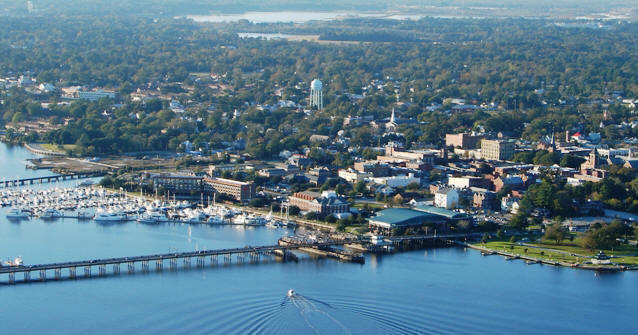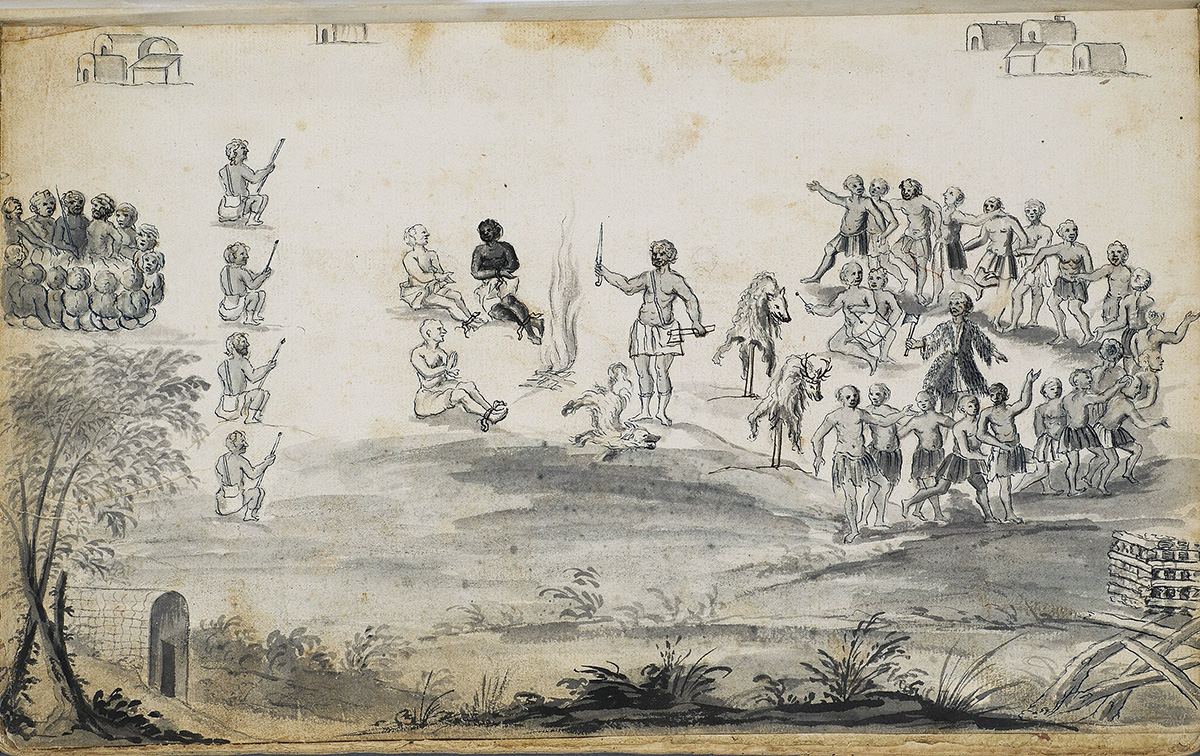New Bern remembers its founding fathers

Exactly 300 years ago, Christophe von Graffenried, a Bernese nobleman, travelled with migrants from Switzerland and Germany to settle in New Bern, North Carolina.
The town, the oldest Swiss settlement in the United States, has been celebrating its past all year, but September 11 will mark the beginning of a series of commemorations of its foundation.
On “Founder’s Day”, descendants of von Graffenried and other settlers will place a wreath at the newly restored bust of the baron next to city hall before taking part in a ceremony at the town’s Lutheran Christ Church.
“It will be a modest and dignified ceremony,” explained Wilda Thomas, a member of the Founder’s Day committee and seventh-generation von Graffenried descendant. “We simply want to show our recognition and celebrate the memory of our ancestors,” she told swissinfo.ch.
Earlier this year, these descendants organised a family reunion, with around 150 families taking part as well as 30 relatives from Switzerland, according to Thomas.
More official events will take place between September 16 and 19, with the presence of Swiss guests. These will include the outgoing Swiss ambassador in Washington, Urs Ziswiler, as well as a delegation from the capital led by mayor Alexander Tschäppät.
Strangely enough though, New Bern’s heritage only came to the fore late in the 19th century. In 1891, the town’s mayor crossed the Atlantic to help Bern celebrate its 700th anniversary.
“Old” Bern reciprocated five years later by sending an official delegation to the North Carolina city where they donated a Bern flag and consented to a request by New Bern which wished to adopt the Swiss city’s banner with its bear. The flag still hangs in the courtroom at city hall.
Swamp settlement
It was in September 1710 that von Graffenried travelled with migrants from the Bern area to settle in a swampy coastal zone at the confluence of the Neuse and Trent rivers.
Beset by financial failure, the nobleman was lured by the promise of silver in the new world, and both the Bernese authorities and British crown backed him as a way of getting rid of religious dissenters.
German settlers from the Palatinate region, who had arrived in America a few months earlier, joined up with the Swiss. But the venture was far more complex and difficult than anyone had imagined.
After one year, skirmishes with the Native American Tuscarora tribe broke out. The Native Americans were defending themselves against a growing invasion of their territory by settlers and against enslavement, according to Leo Schelbert, a former professor of American history at the University of Illinois in Chicago.
In September 1711, von Graffenried left on an unauthorised field trip to the heart of the Tuscarora lands with English surveyor John Lawson. They were captured, and while the Bernese patrician survived, Lawson did not.
Friendship treaty
Von Graffenried managed to agree on a friendship treaty with his captors, but his accord was considered treason by the British governor of Carolina, Schelbert told swissinfo.ch.
During the nobleman’s captivity, Tuscarora tribesmen attacked the homesteads of English- and German-speaking settlers, killing around 80 of them. British troops were sent to exterminate the attackers, enslaving the survivors.
Von Graffenried did not stay long in the settlement he had helped to found. He left New Bern in 1713 and returned to Switzerland in 1714, although his eldest son remained in America.
Locals in New Bern will be able to take a look back at the history of their town through Swiss eyes. The exhibition “Bern New Bern”, which was already on display in the Swiss capital earlier this year, will open on September 16.
De Graffenried was born in his ancestral village of Worb in 1661 and died there in 1743. His father, Anton, was Lord of Worb and a minor government official.
De Graffenried studied at the universities of Heidelberg and Leyden. During his travels to London, he met the Duke of Albemarle and other Lords Proprietors of Carolina.
Back in Switzerland, he met a Swiss explorer, Franz Ludwig Michel, who persuaded him to join and invest in a company that proposed to mine American silver deposits and to settle Swiss and Swiss Anabaptists in Pennsylvania or Virginia.
The company broadened its plans to settle colonists in the province of Carolina and to include among them many Palatines.
The company purchased from the Lords Proprietors nearly 19,000 acres of land on the Neuse and Trent rivers, including the future site of New Bern, and on the White Oak River, which de Graffenried called by the Indian name of Weetock.
(Adapted from German by Scott Capper)

In compliance with the JTI standards
More: SWI swissinfo.ch certified by the Journalism Trust Initiative















You can find an overview of ongoing debates with our journalists here . Please join us!
If you want to start a conversation about a topic raised in this article or want to report factual errors, email us at english@swissinfo.ch.